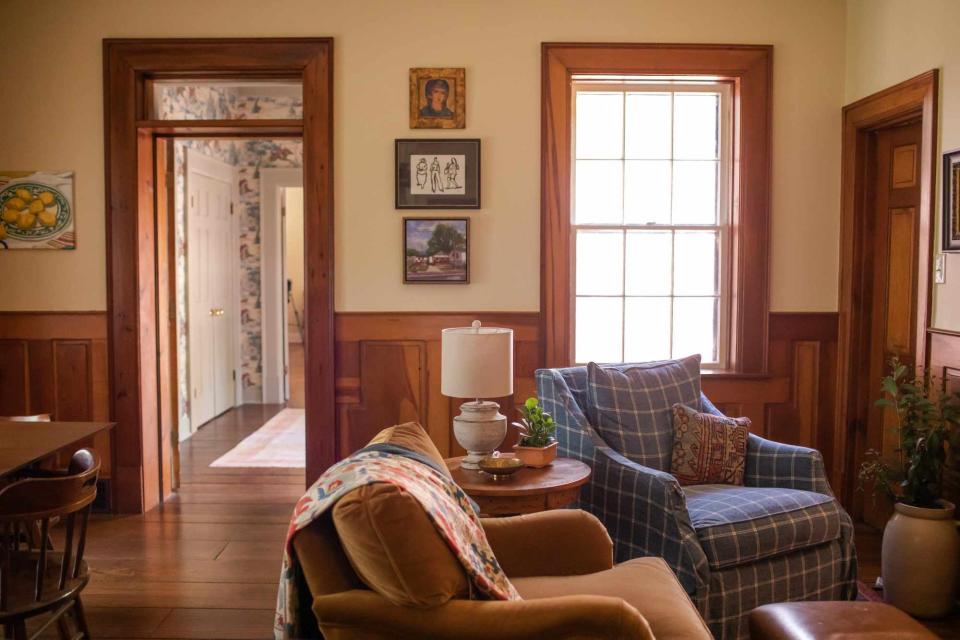What Is A Keeping Room? Here's Why We Can Get Behind This Timeless Trend
This Colonial-era signature space is making a big comeback in new builds.

While the keeping room has historical roots, its purpose couldn't be more on point for today. It's a small seating area off of the kitchen where family or guests can hang out to keep the person who is cooking company. Erin and Ben Napier, the couple behind the popular show Home Town, recently shared their new country home in Mississippi with us, which had a keeping room just off of their kitchen. Erin discussed how this charming space is where the family spends so much of their time together, and how it's one of her favorite cozy spots in the house.
Where the Name 'Keeping Room' Came From
In Colonial times, before central heating was a thing, family life centered around the warm kitchen. The keeping room was a common space where anyone not cooking sat (or even slept) to stay out of the way but could still take advantage of the heat. The hearth kept them warm, hence the name. Because the fireplace was the main attraction, these were sometimes called "hearth rooms."
What Makes a Keeping Room
The original draw was warmth, so a fireplace and placement next to the kitchen are the only two unbreakable rules (though in modern times, you could make a case against the necessity of a fireplace). Comfortable seating comes next; after that, it can flex according to your needs. Historically, hobbies and home-keeping tasks were also performed here, so colonists had storage for sewing supplies, books, and games. A desk for writing letters or a daybed or cot wasn't uncommon, either.
The space is different from a den or family room because those are usually either totally secluded (den) or centrally-located in the home (family room). A keeping room is usually smaller, too, suited for two to four people at once.
How to Use a Keeping Room—or the Next Best Thing
If you live in an older home with a keeping room, think of the specific needs of the people who will use the room during peak cooking times. Perhaps it's a child who needs encouragement for homework, a teen and his or her friends who want to hang out close to snacks, or a friend or partner who likes to be nearby to catch up on the day. Then, furnish accordingly, focusing on comfort and coziness. (Try playing with different textures—super soft rug, plush pillows, natural woven furniture—as a first step.)
But even if there's not an "official" keeping room in your house's layout, you can recreate the function by adding seating to a larger or eat-in kitchen. Even a small kitchen could absorb an overstuffed armchair, table, and stack of games or books.
A warm space with comfortable practicality—it's no wonder the keeping room is timeless.
For more Southern Living news, make sure to sign up for our newsletter!
Read the original article on Southern Living.

